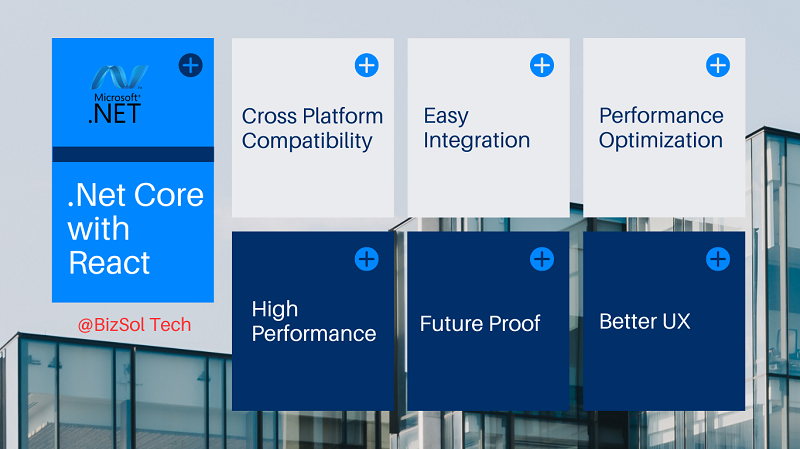When it comes to developing a web application, choosing the right frontend framework is crucial.
With the rise of JavaScript frameworks, it can be overwhelming to decide which one to use. However, .NET Core with React has emerged as a powerful combination for web app development.
In this article, we will explore why .NET Core with React is the best merge for web app development and how it can benefit your project.
What is .NET Core?
.NET Core is a free, open-source, and cross-platform framework for building modern web applications. It was developed by Microsoft and is widely used for developing high-performance and scalable web applications.
It offers several advantages for businesses:
- Performance: .NET Core boasts exceptional performance, ensuring your business loads quickly and delivers a seamless user experience.
- Scalability: As your business grows, .NET Core can easily scale to accommodate increasing traffic and data needs.
- Security: Built with robust security features, .NET Core protects your app from potential vulnerabilities.
- Rich Ecosystem: .NET Core benefits from a vast ecosystem of libraries and tools, streamlining development and offering a wide range of functionalities.
What is React?
React is a popular frontend JavaScript library. It is used for building user interfaces and is known for its efficiency and performance.
React uses a virtual DOM, which allows for faster rendering and updating of the UI.
It excels in these key areas:
- Speed and Efficiency: React uses virtual DOM (Document Object Model) technology, enabling efficient rendering and updates, resulting in a fast and responsive user experience.
- Reusable Components: React promotes building reusable UI components, leading to cleaner code and faster development.
- Unidirectional Data Flow: React enforces a unidirectional data flow, making debugging simpler and maintaining complex applications easier.
Why Merge .NET Core with React?
The combination of .NET Core and React offers a powerful and efficient solution for web app development.
React, a JavaScript library developed by Facebook focuses on building dynamic user interfaces (UIs).
It excels in these key areas:
- Speed and Efficiency: React uses virtual DOM (Document Object Model) technology, enabling efficient rendering and updates, resulting in a fast and responsive user experience.
- Reusable Components: React promotes building reusable UI components, leading to cleaner code and faster development.
- Unidirectional Data Flow: React enforces a unidirectional data flow, making debugging simpler and maintaining complex applications easier.
Here are some reasons why this merge is the best choice for your project:
- Cross-Platform Compatibility
Both .NET Core and React are cross-platform, meaning they can run on different operating systems. This allows for more flexibility in development and deployment, as the same code can be used for different platforms.
- High Performance
Performance is a crucial factor in web app development. With .NET Core and React, you can expect high performance and fast rendering of your application. .NET Core is known for its speed and efficiency, while React’s virtual DOM allows for faster updates and rendering of the UI.
- Easy Integration
Integrating .NET Core with React is seamless and straightforward. React can be easily integrated into .NET Core projects, allowing for a smooth development process. This also makes it easier to add new features or make changes to the UI without affecting the backend code.
- Performance Optimization
Performance optimization is essential for any web application. With .NET Core and React, you can easily optimize your application for better performance. .NET Core offers features such as caching and precompilation, while React’s virtual DOM allows for efficient rendering and updating of the UI.
- Large Community Support
Both .NET Core and React have a large and active community of developers. This means you can find plenty of resources, tutorials, and support when working with these technologies. This can be especially helpful for beginners or when facing any challenges during development.
- Leveraging TypeScript for Static Typing
The .NET Core ecosystem thrives on strongly typed code for early issue detection, and editor productivity features. With React, TypeScript steps in to provide robust and flexible type systems, ensuring a seamless development experience.
.NET 6 (released November 2021) and React 18 (released March 2022) are the latest versions of these frameworks, offering even more benefits:
- .NET 6: Improved performance, enhanced hot reloading (faster development cycles), and better cross-platform compatibility.
- React 18: Automatic batching for improved performance, new features for error handling, and better developer experience.
Practical Considerations
When considering .NET Core and React for your project, here are some key points to ponder:
- Development Expertise: Evaluate your team’s skillset. While both technologies offer resources for beginners, some experience is beneficial.
- Project Requirements: Consider the specific needs of your e-commerce store. The complexity of your application will influence your choice of tools and architecture.
- Existing Infrastructure: If you already have a .NET backend, integrating React as the front-end can leverage your existing investment.
Beyond the Basics: Exploring Architecture Options
There are several ways to integrate .NET Core with React for your application. Here are two popular approaches:
- Separate Projects: Develop the .NET Core backend and React front-end as independent projects, communicating through APIs (Application Programming Interfaces).
- ASP.NET Core with React.js Template: This Microsoft-provided template simplifies the setup and integration process, offering a pre-configured structure.
A Future-Proof Choice: Embracing Innovation
Both .NET Core and React are actively developed platforms with a strong focus on innovation. This ensures your application can leverage the latest advancements in web development for years to come.
In conclusion, .NET Core with React is the best merge for web app development.
It offers cross-platform compatibility, high performance, easy integration, and performance optimization, making it a popular choice among developers.
If you are looking to build a modern and efficient web application, consider using .NET Core with React for your project.
With our Microsoft .NET development services, you can build feature-rich web solutions and boost revenue.
For more information, drop us a line in email, and we’ll take it from there.



